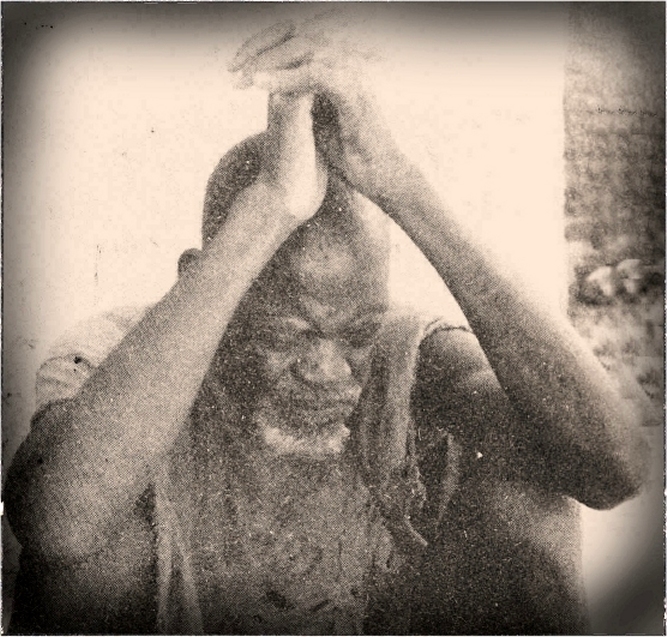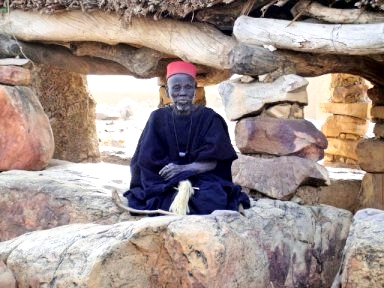
Shannon Dorey
Join Shannon Dorey's YouTube channel to watch videos about the Alien Nummo. This is the first video in the series Who Were the Alien Nummo? This is the second video The Serpent-like Aspect of the Alien Nummo in Human HistoryShannon Dorey is a Canadian author best known for her research on the African Dogon people. She is a graduate of Trent University in Peterborough, Ontario, Canada with a combined English and History degree. Her interests were expanded to religious studies after studying the New Testament at the University of Windsor in 1991.
Based on the work of ethnographers Marcel Griaule and Germaine Dieterlen, Dorey has written four books analyzing the symbols found in the Dogon religion. In The Master (Mistress) of Speech, first published in 2002, with the latest edition in 2018, Dorey associates the Dogon symbols with genetics and biological engineering.
In The Nummo, published in 2004, with the latest edition in 2019, Dorey hypothesizes that the Dogon religion is an extremely ancient oral tradition with traces of it found in most ancient religions of the world.
In Day of the Fish, first published in 2012 with the latest edition in 2022, she compares the Nummo to the goddesses of the Neolithic period as defined by the Lithuanian-American archeologist, Marija Gimbutas.
In The Rose, published in 2016 with the latest edition in 2022, Dorey associates Dogon symbols and star knowledge with information about red giant stars and other aspects of astrophysics.
Dorey has written numerous articles on the Dogon religion including one for New Dawn magazine in 2010, which compares the Australian Rainbow Serpent to the Dogon Nummo, who were also known as rainbow serpents.

Ogotemmêli
Marcel Griaule established a relationship with the Dogon people during field trips, which began in 1931. After years of questioning the Dogon elders about the religion, the Dogon finally agreed to let Griaule in on the religion's innermost teachings. Ogotemmêli was chosen to present the secret knowledge to Griaule. This was done in 33 days, which began in October of 1946. This picture of Ogotemmêli is from Griaule's book, Dieu d'eau, which was published in 1948.
Ogotemmêli was considered one of the most powerful minds on the Cliff of Bandiagara in Mali where the Dogon lived. It had taken him over 20 years to learn his religion, which he learned first from his grandfather and then his father. It was because of Ogotemmêli, that Griaule recorded the religion so accurately. Without this accuracy it would have been impossible for me or any other researcher to decipher it.
Through most of his life Ogotemmêli had been an accomplished hunter. In spite of having lost his eye to smallpox as a child, he always came back with a full bag of animals while others were still toiling in the gorges.
He didn't like hunting though. He said it was the work of death and it attracted death. He blamed his profession on the fact that out of twenty-one children, by 1946 he had only five children left.
He became completely blind as a result of a hunting accident later in life, when guns became a part of their culture. The gun exploded in his face and he lost his second eye. Ogotemmêli believed this accident was the last warning sign and he knew through this divination that he would never hunt again.
After his accident, he devoted his time to his religion and to offering advice and powders to people who came to visit him on the cliffs. The Dogon people had a system of signs which ran into the thousands, including "their own systems of astronomy and calendrical measurements, methods of calculation and extensive anatomical and physiological knowledge, as well as a systematic pharmacopoeia." He was the most knowledgeable of the Dogon elders and famous throughout the hills and plateau.Conversations with Ogotemmêli, Griaule, p. 14-15

Dogon Hogon"Hogon" by Senani P at en.wikipedia. Licensed under CC BY 2.5 via Wikimedia Commons - https://commons.wikimedia. org/wiki/File:Hogon.jpg# /media/File:Hogon.jpg By Senani P at en.wikipedia, CC BY 2.5, lightened and resized https://commons.wikimedia.org/ w/ index.php?curid=4098562
Hogon and Astrophysics
My books are based on the beliefs of the Dogon people of Mali, Africa, who spoke of alien water beings known as Nummo, who came from space, and who formed the basis of their religon.
The focus of the Dogon religion was genetics in combination with astrophysics. The red hat the Dogon Hogon wears, in this photograph by Senani, is a symbol of a red giant sun. In astrophysics large red giant suns explode as supernovas to give birth to new stars and planets. Red giant stars or suns were a symbol of the alien Nummo, who were identified with the divine feminine and considered the mothers of humanity and the universe. The Dogon considered red suns pregnant suns. At the time their religion was recorded, the Dogon lived along the Cliff of Bandiagara in Mali, an isolation that allowed them to keep ancient pagan beliefs that were lost in most other places of the world.
Over the course of 20 years, the French anthropologists Marcel Griaule and Germaine Dieterlen spent time in Mali recording the Dogon religion and my research is based on their findings. I've been studying the Dogon religion since 1999 and have written four books about it.
The Dogon religion is a mystery religion, and I believe it is the pagan mystery religion that was thought to have been lost to humanity. The reason this religion survived with the Dogon people is because they were isolated from the rest of the world and continued to practice their religion even though it had been lost in most other places.
It is by studying Dogon symbols in comparison to other ancient religions that we can uncover the truth about our past. These ancient symbols are universal and appear in every ancient religion I have studied. They form the basis of Christianity and Judaism.
I believe that Dogon symbolism is the same symbolism that was understood by many Indigenous groups from around the world. My research indicates that what is known today as the Dogon religion is extremely ancient and existed in Africa before people migrated to other areas of the Earth.